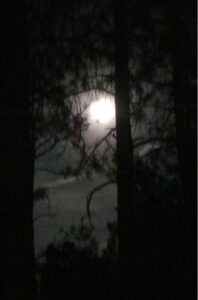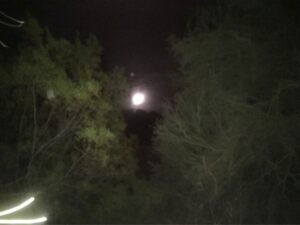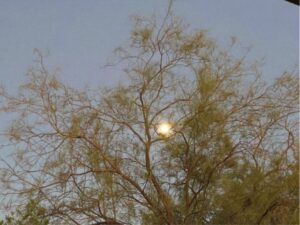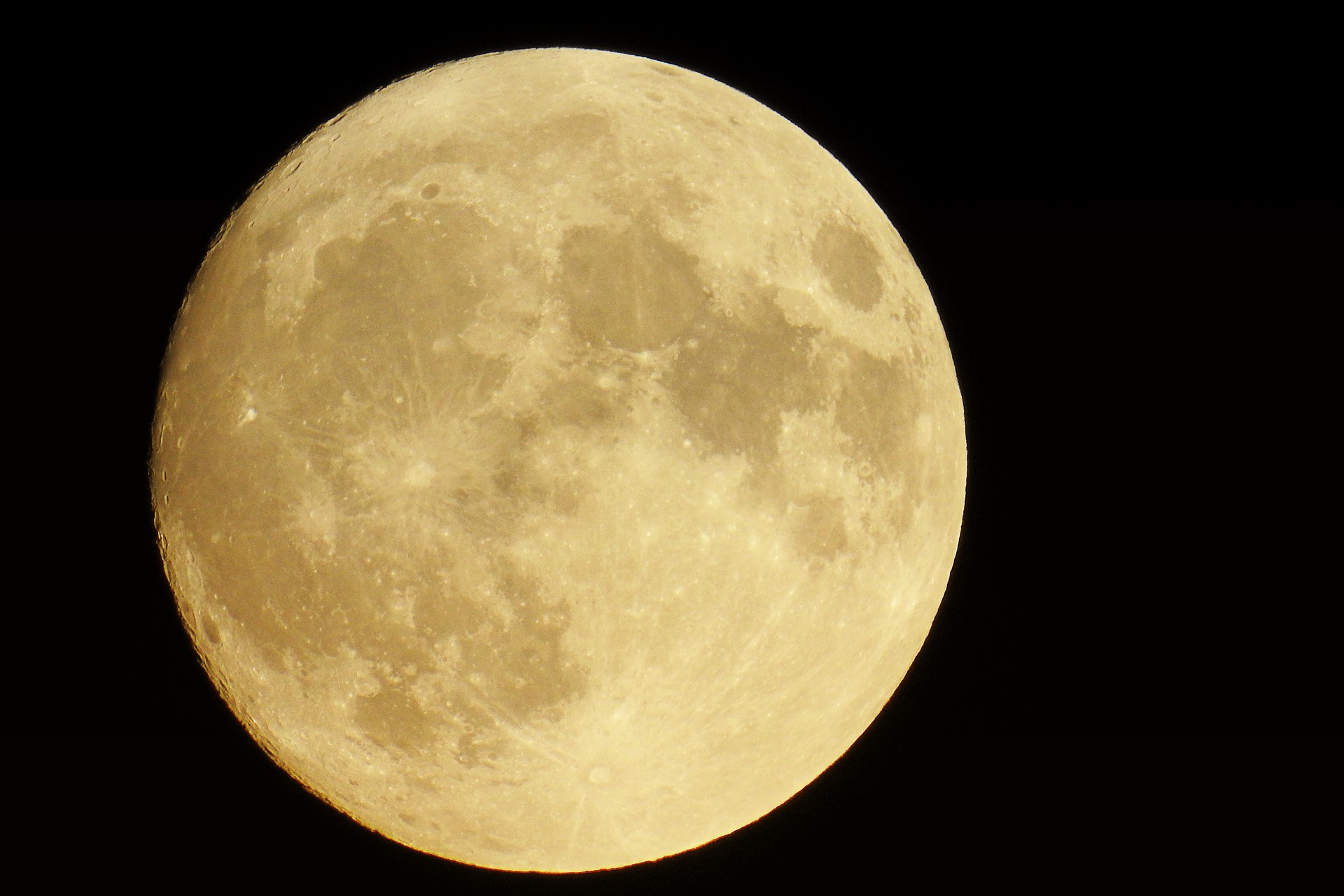We live in a very visual world. Our entertainment is mostly visual: TV, movies, videos and, of course, our cell phones.
Above Photo courtesy of Hans Benn of Pixabay.
When you write a story, however, you must create the setting for the reader through words alone. This can be challenging. For instance, the setting for a story includes a full moon. Is that enough information? Unfortunately not.
Look at the photos below.

This photo was taken by my friend, Gerry Sprie. This could be a dense forest, or the woods on a foggy night. I envision this setting being used for a scary story, perhaps for a Halloween tale, but for others, it might be a romantic moon in a lush forest.
The trees in this photo are very different than the trees in the next image. The setting below seems more confining, as opposed to openness of the taller trees and the clearer view above. I feel a bit claustrophobic with the photo below.

Full moons don’t appear only at night. Sometimes, the moon rises when the sun is still out. That setting is much different from the previous one.
Daytime moons can be varied as well.
 The moon here is rising above a majestic mountain range, while the one below is entangled in a ground level tree. Of course, the tree and mountains are part of the setting as well, and can help set the scene you’re writing. One gives a feeling of a wide Western vista, and the other is grounded. I might even write that the rising moon is snagged in the branches of a Palo Verde tree.
The moon here is rising above a majestic mountain range, while the one below is entangled in a ground level tree. Of course, the tree and mountains are part of the setting as well, and can help set the scene you’re writing. One gives a feeling of a wide Western vista, and the other is grounded. I might even write that the rising moon is snagged in the branches of a Palo Verde tree.
 A full moon provides many elements for a story: illumination for the nighttime activity, the effect of the full moon on the tides and possibly behavior, tying in the local cultural beliefs associated with full moons, or it could even mark a time of year. So many possibilities.
A full moon provides many elements for a story: illumination for the nighttime activity, the effect of the full moon on the tides and possibly behavior, tying in the local cultural beliefs associated with full moons, or it could even mark a time of year. So many possibilities.
For practice, try writing descriptions of these photos or some photos of your own. Will the reader see the scene in her mind’s eye? Will you transport the reader to your story’s location to experience what the character is experiencing? What does the sky look like? Is there a breeze? What odors does he smell? What sounds surround him?
The goal of the writer is to utilize all the senses, pulling the reader into the story as if she was there. Have fun with this and remember to keep at it. Practice does make perfect with writing!
Book Note: I have very much enjoyed writing to bring alive the flora and fauna of The Bahamas and the Cayman Islands in my adventure tales written for 8-12 year-olds. The characters are critters who seem to be experts at making mischief. I hope you will consider these educational adventure tales that have the science of the islands woven into the stories. In other words, readers learn about the wildlife in these locales in a fun way. In my book, Curtis Curly-tail Hears a Hutia, an endangered species threatens a protected environment–and the reader gets to choose the ending he or she believes will best solve the problem. I believe science should be fun, and I hope you will agree.

The hutia are endangered rodents native to the islands. Some are transplanted to Curtis’s cay, and Curtis meets his new friend, Horace. When the scientists come back to check on the hutia, they find that the native shrubs are almost gone, due to the hungry hutia.
But Curtis and Horace do not understand what is happening when the hutia are captured and put into cages. Curtis decides to do everything he can to help Horace and his family.
It is you, the reader, however, who must decide how the story will end. How do you solve a problem when an endangered species threatens a protected environment? There are three endings to the book. Which one will you choose?
Or, will you come up with another solution?
Lesson plans for teachers are also
available at iginspired@gmail.com.

